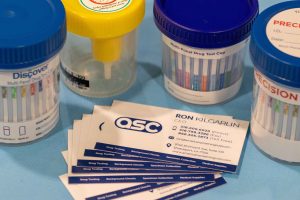Exploring Body Hair’s Potential in Hair Follicle Drug Testing


In the realm of drug testing, innovation and accuracy have become paramount. Hair follicle drug testing, known for its extensive detection capabilities, has become a preferred choice in various fields, from employment screening to criminal investigations. Traditionally, scalp hair has been the primary source for this method, but what about body hair? Can body hair serve as a reliable alternative for hair follicle drug testing? In this article, we delve into the scientific intricacies and practical applications of using body hair, assessing its merits and limitations in the context of drug testing.
Deciphering Hair Follicle Drug Testing
Hair follicle drug testing is a robust and dependable technique for identifying drug use in individuals. It involves analyzing hair samples, typically collected from the scalp, to detect the presence of drug metabolites that have become incorporated into the hair during its growth. The principal strength of this method is its substantial detection window, often spanning several months, making it highly effective for identifying chronic drug use. It can identify many substances, including marijuana, cocaine, opioids, amphetamines, and more.
Scalp Hair vs. Body Hair
Scalp hair has traditionally been the gold standard for hair follicle drug testing due to its consistent growth rate. Still, body hair is emerging as a potential alternative with advantages and limitations.
Advantages of Using Body Hair
Extended Detection Window: Body hair offers an extended detection window, which surpasses even the scalp hair’s capabilities. Body hair tends to grow at a slower rate, allowing for the identification of drug use over a more extended timeframe.
Reduced Risk of Contamination: Body hair, such as chest or leg hair, is less prone to contamination by external substances, like shampoos and hair treatments. This reduced risk of contamination leads to more accurate test results.
Non-Invasive Collection: Collecting body hair samples is less invasive than scalp hair collection, providing comfort and ease to individuals undergoing testing.
Limitations of Using Body Hair
Slower Growth Rate: While body hair provides an extended detection window, its slower growth rate can make it less suitable for detecting recent drug use, which is essential in specific testing scenarios.
Individual Variability: Hair growth rates vary among individuals, potentially causing inconsistencies in detection accuracy when using body hair as the sample.
Limited Availability: Not everyone has an ample supply of suitable body hair for testing, and some individuals may have very little or no body hair, significantly limiting the feasibility of using this type of hair as a sample.
Lower Sensitivity: Some research suggests that body hair may exhibit lower sensitivity when detecting drug use, especially in infrequent or low-dose drug consumption cases.
Using body hair as a sample in hair follicle drug testing is feasible, but it must be considered with specific qualifications. Body hair can be a valuable alternative to scalp hair, especially for individuals with minimal or no hair. It offers an extended detection window, particularly beneficial for identifying chronic drug users. However, the slower growth rate and potential individual variability in hair growth can pose challenges when detecting recent drug use.
The choice between using scalp hair and body hair for hair follicle drug testing should depend on the specific requirements of the testing scenario. Both hair types can provide valuable insights into an individual’s drug use history, and selecting the appropriate sample type is crucial for obtaining accurate and meaningful results.
Ultimately, laboratories conducting hair follicle drug testing must adhere to stringent quality control standards to ensure the accuracy and reliability of the results, irrespective of the type of hair sample used. In conclusion, body hair can be a significant asset in hair follicle drug testing when thoughtfully selected in the context of the individual’s circumstances and the objectives of the testing process.
